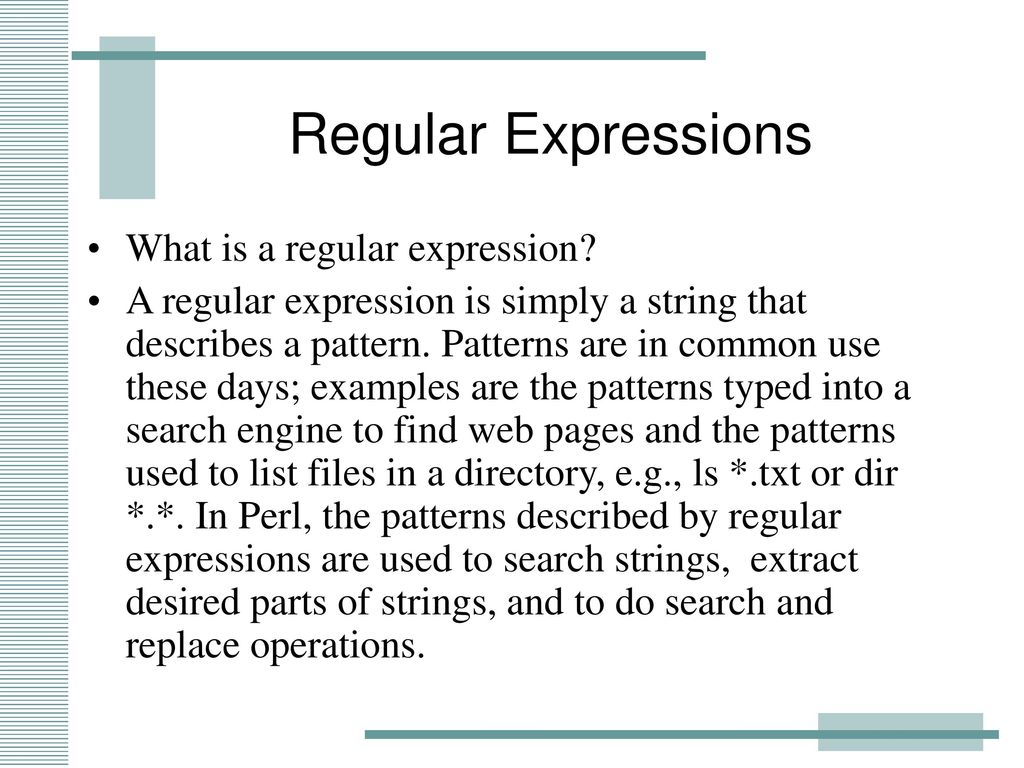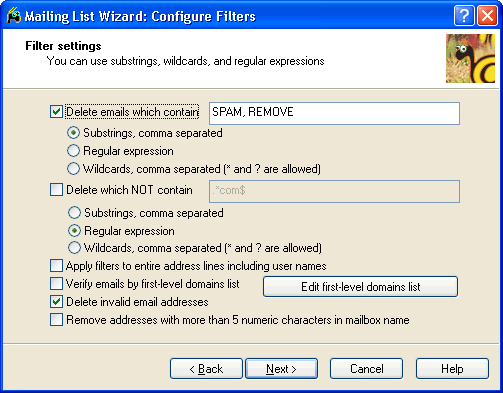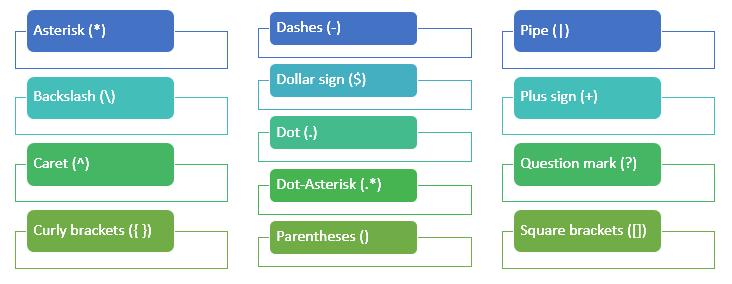

Second, we looped over the list of lines.


The text data could come from a file or a web page. In the example above, our goal is to extract composer names and their periods out of the string $text. Name: Antonio Brioschi, period: 1725 -1750 narrow.Name: Antonio Vivaldi, period: 1678 -1741 Your program first opens a gate, then sends or receives data through the gate, and finally closes the gate. There are many types of gates: one-way vs. A filehandle acts as a gate between your program and the files, directories, or other programs. map( regex, array): returns a new array constructed by applying regex to each element of the array.įilehandles are data structure which your program can use to manipulate files.grep( regex, array): selects those elements of the array, that matches regex.My $newMsg = join '', # 'Hello,worldagain!' Example 1: Regex + #!/usr/bin/env perl # try_m_1.pl It returns true if $_ matches regex and false otherwise. M//, by default, operates on the default variable $_. Changing the default delimiter is confusing, and not recommended. However, if forward-slash ( /) is used as the delimiter, the operator m can be omitted in the form of / regex/ modifiers. Instead of using forward-slashes ( /) as delimiter, you could use other non-alphanumeric characters such as !, and % in the form of m! regex! modifiers modifiers or m% regex% modifiers. The syntax is: m/ regex / m/ regex / modifiers # Optional modifiers / regex / # Operator m can be omitted if forward-slashes are used as delimiter / regex / modifiers Delimiter You can use matching operator m// to check if a regex pattern exists in a string. s/ regex/ replacement/ modifier: Substitute matched substring(s) by the replacement.m/ regex/ modifier: Match against the regex.In Perl (and JavaScript), a regex is delimited by a pair of forward slashes (default), in the form of / regex/.

Perl makes extensive use of regular expressions with many built-in syntaxes and operators. " Regular Expressions" for full coverage." Regex Syntax Summary" for a summary of regex syntax and examples.I shall assume that you are familiar with Regex syntax. In other words, a regex accepts a certain set of strings and rejects the rest. Regular Expressions in PerlĪ Regular Expression (or Regex) is a pattern (or filter) that describes a set of strings that matches the pattern. Perl is famous for processing text files via regular expressions.


 0 kommentar(er)
0 kommentar(er)
